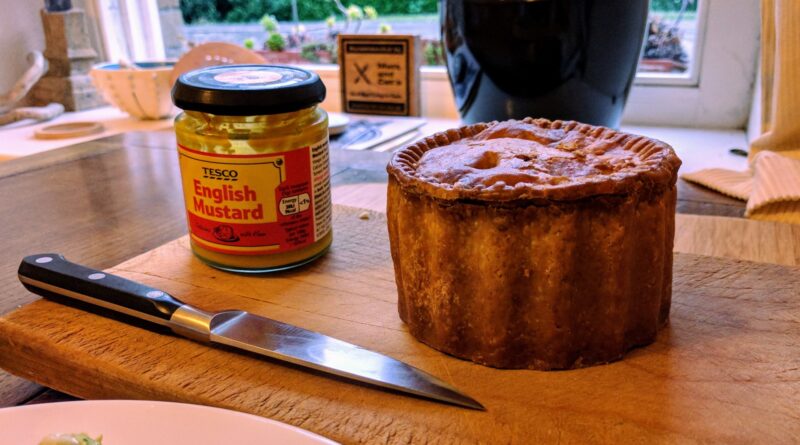Pork pies for the masses
- Complaining about the Mainland - 17th August, 2024
- New island designation – is it just greenwash? - 26th April, 2024
- Police and Crime Commissioners – a solution or a problem? - 21st April, 2024
We were dining out a while ago with a couple of friends, one of whom is a vegetarian. After their food had been delivered, they wordlessly swapped plates, in a manner suggesting long familiarity. The waiter had delivered the vegetarian dish to the lady in the party – even though it was the gentleman who had ordered the veggie food. This, our pals assured us, was a very common occurrence. It set me to thinking, and I soon realised that this went well beyond hoary stereotypes of vegetarians being exclusively female. I hesitate to throw any more fuel onto the flames that currently represent the debate about maleness and femaleness, but it does seem to me that what we eat is more about gender than we might imagine.
Take a very well-known foodstuff: the classic English pork pie. I’m fond of a pork pie, but I’m aware that this is an affection not shared by many women I know. Sure, women will eat pork pies and enjoy them; but to my mind, the sort of person who will go into a shop for a quick bite of lunch and come out eagerly hugging a pork pie is almost invariably male. Sausage rolls and scotch eggs are maybe one notch further towards the female end of the range, but still something I would expect to see relished by a man rather than a woman. By the time you get to filled rolls and sandwiches it’s a free-for-all, although I’d be willing to bet that more men will buy a BBQ pulled pork sandwich, as opposed to, say, chicken and avocado.
It turns out, predictably enough, that product designers know this well, and manipulate us into buying things that reinforce these stereotypes. Evidence of this is that different nations have been conditioned to like different things. Studies have compared how people in different countries think about food, and it turns out that everywhere men prefer salty and fatty foods, and women prefer sweeter ones. But within these preferences, the variety of food preferred is very much learned. So in America, women crave chocolate a lot more than men do. In Spain, it’s about the same for both sexes[ref]. The suggestion is that American women have been manipulated into wanting chocolate by cultural conditioning – or, more bluntly, by advertisements and marketing[ref]. Presumably the same is true for men eating crisps and porky snacks.
This kind of subtle signposting is something worth knowing, and not just because it’s important for our gender identities – it’s also important for our health. Men and women can both eat healthily if they choose to, and maybe one way we can do so is to bust out of food conventions and eat some things we might be less inclined to try. I had a stunningly good vegetable burger the other day, which had no meat or salt in it. And women – didn’t you ever want to ditch the chocolate and eat salted peanuts? We’re embracing gender equality in many parts of society, so let’s do the same with food: pork pies are for everyone, not just chaps like me.



Any man other than my husband would have to prise my lunchtime pork pie out of my cold dead hand mate. Ditto scotch eggs and Cornish pasty. I might let them have a sniff of the massive malt vinegar pickled onion that is generally sitting in proximity to said pork based food stuff.
But it stops at a sniff.
Short crust pastry and well seasoned pork is the stuff of the Northern Goddess.
Mr and I small hold and are heritage orchard growers in Wales, I just found your blog and thoroughly enjoyed it.
Had a particularly deep chuckle at the environmental job hunting advice.
My brother is now a ‘paid for’ conservation ecologist from pit country. This came after many rainy years of volunteering and feeling he wasn’t able to compete with Tarquin’s who had cycled through Botswana, scattering schools along the way in lieu of emptying blocked bogs on a Sunday morning down the local canal trust.
I forwarded him your job advice to impress upon him the value of cultural capital that comes from an authentic lived experience of working class ill useage. (ha ha)
Great blog